Abstract
Rhizosphere acidification by Fe-deficient bean (Phaseolus vulgaris L.) plants was induced by trace amounts of divalent metal ions (Zn, Mn). The induction of this Fe-efficiency reaction was studied by 14CO2 and 11CO2 fixation experiments, and with 31P-NMR on roots of whole plants. The starting and ending of an acidification cycle was closely coupled to parallel changes in CO2 fixation, within the maximal resolution capacity of 20 min. 31P-NMR experiments on intact root systems showed one peak which was ascribed to vacuolar free phosphate. At the onset of proton extrusion this peak shifted, indicating increase of pH in the cells. Proton extrusion was inhibited, with a lag period of 2 hours, by the protein synthesis inhibitors cycloheximide and hygromycin. It is assumed that Zn and Mn induce proton extrusion in Fe-deficient bean roots by activating the synthesis of a short-living polypeptide; the NMR data suggest a role for this peptide in the functioning of a proton pumping ATPase in the plasma membrane.
Full text
PDF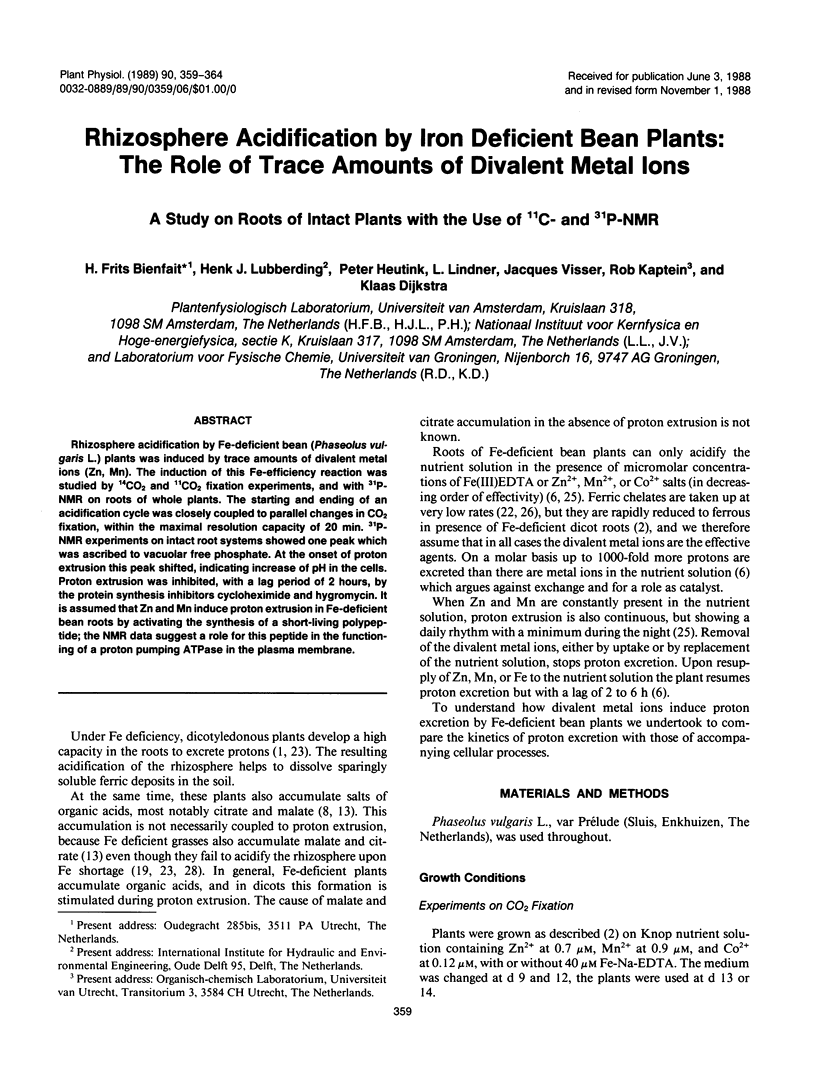
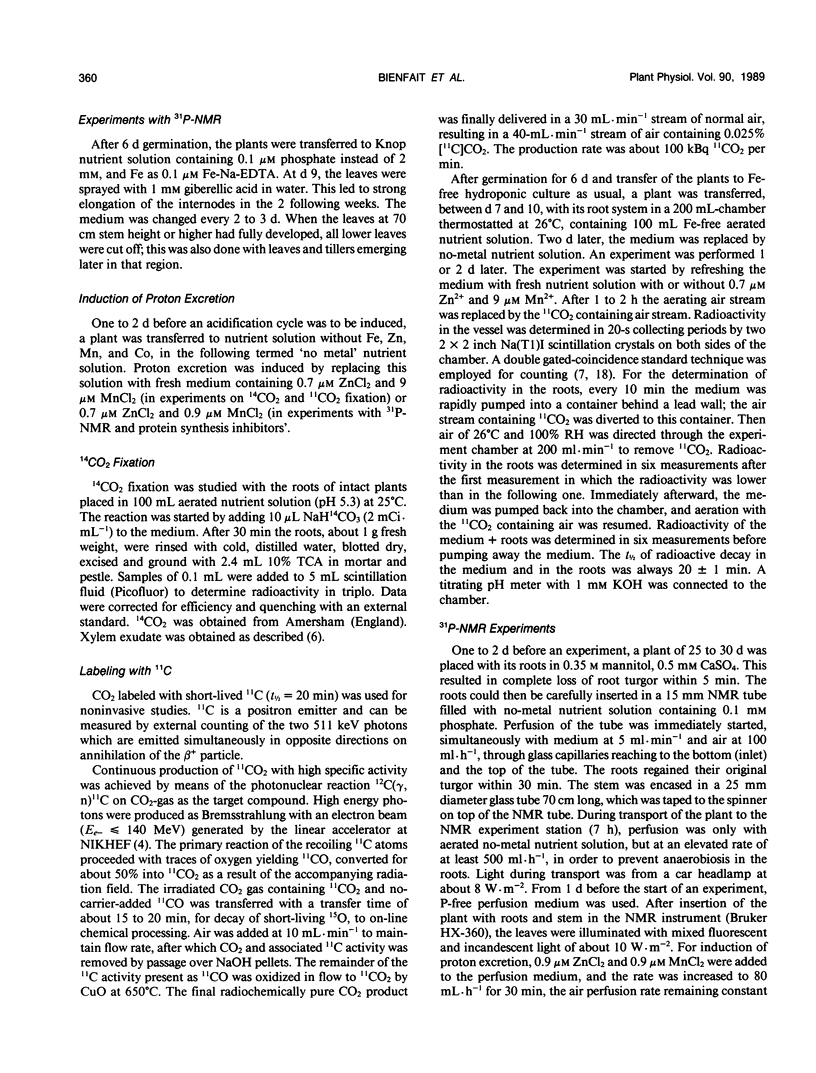
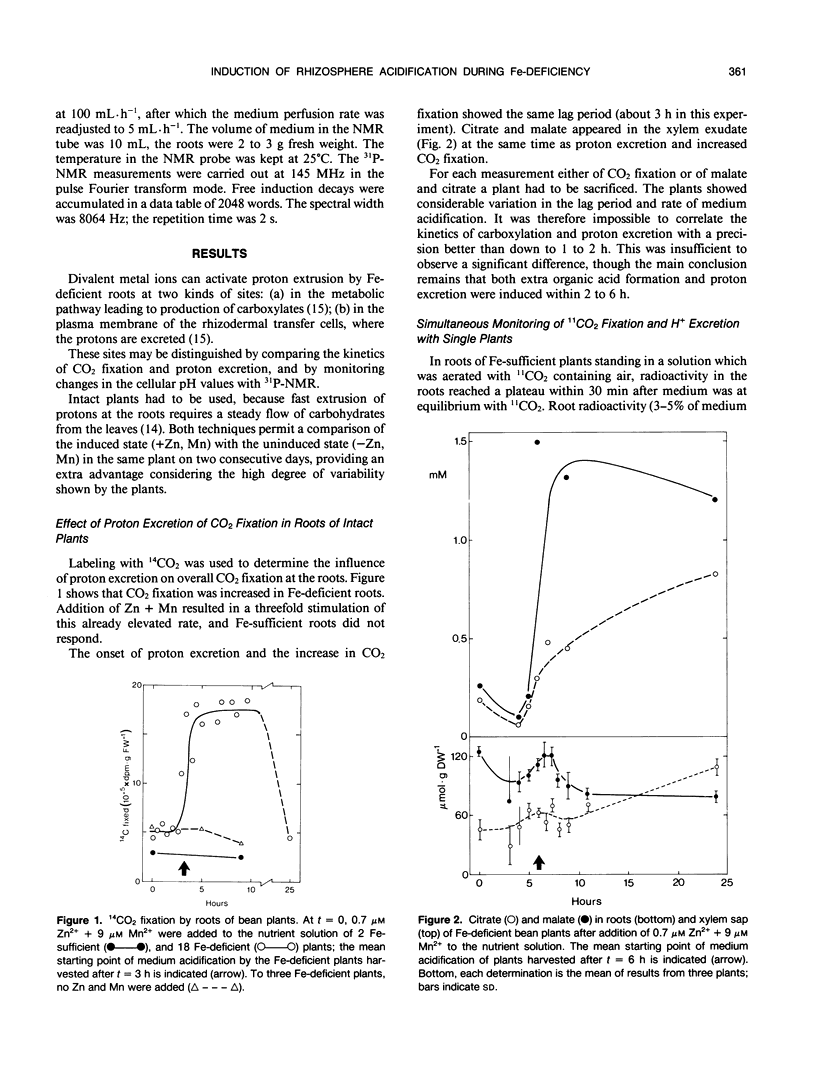
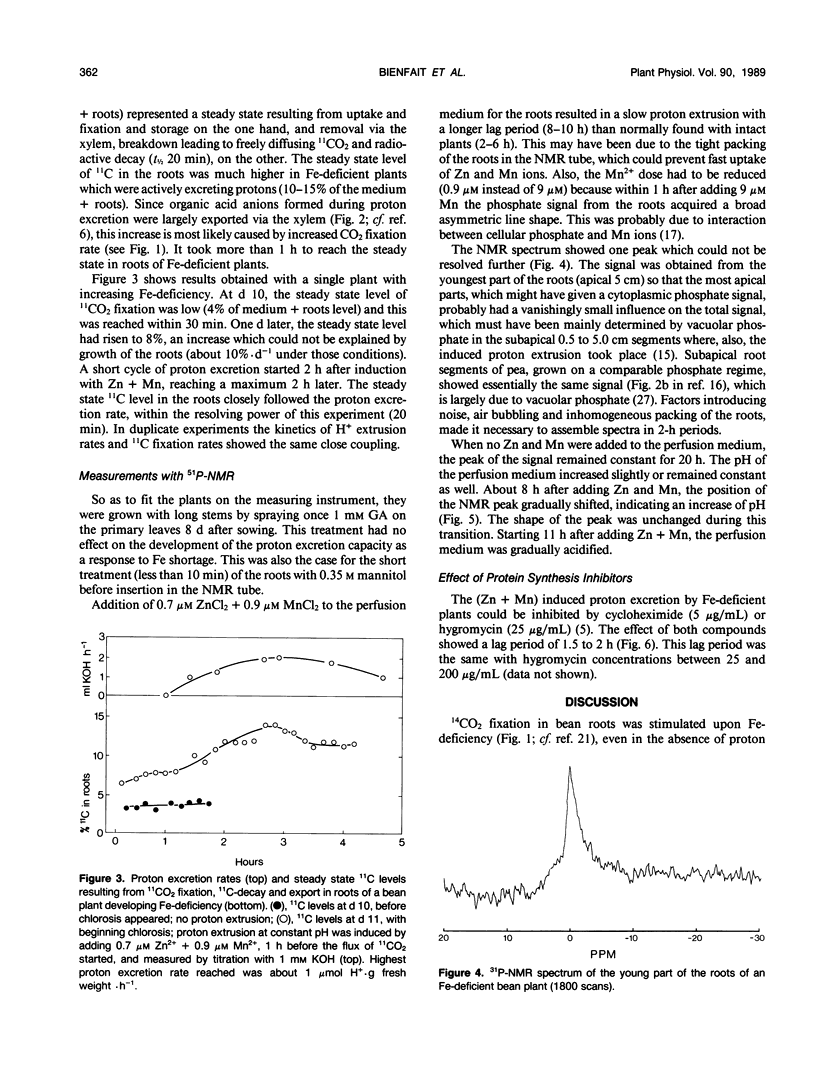
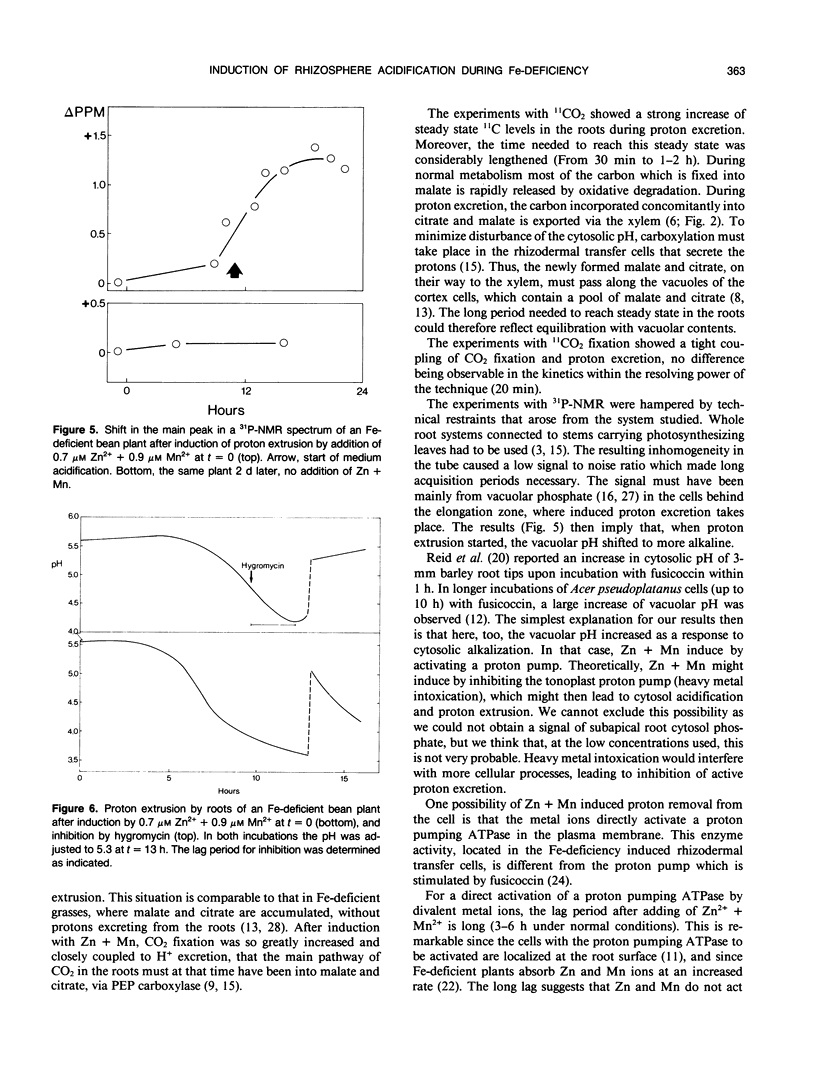
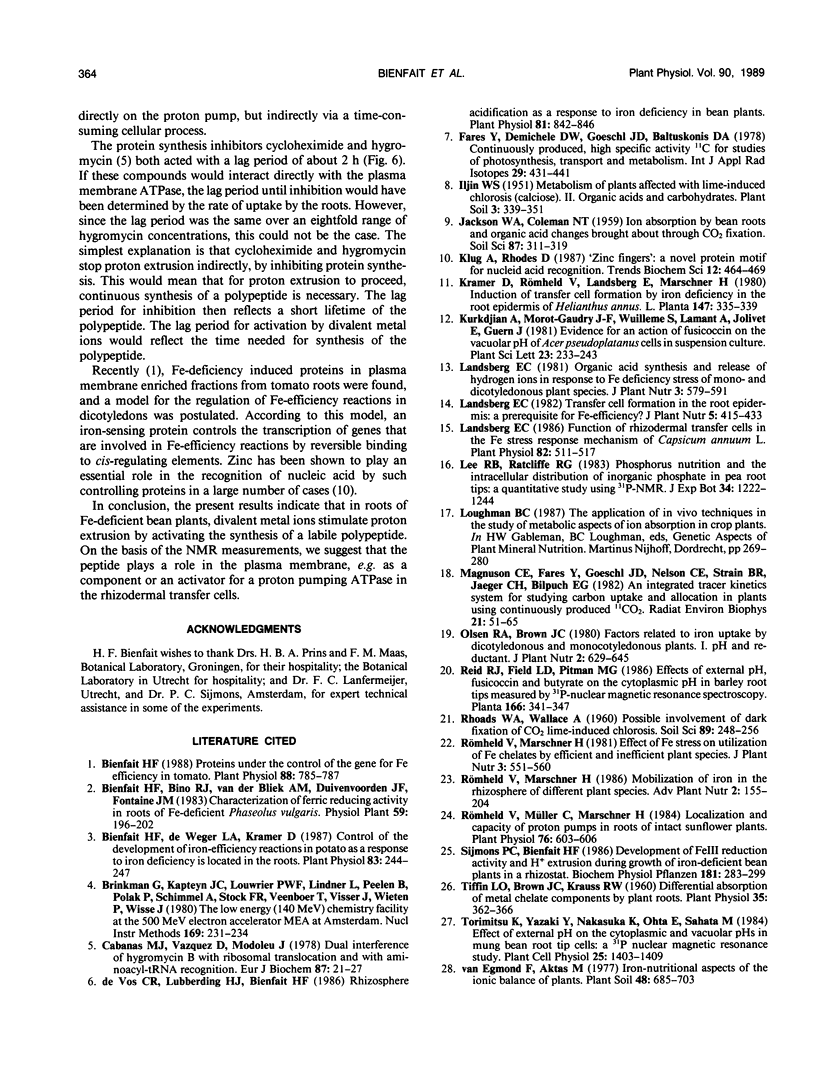
Selected References
These references are in PubMed. This may not be the complete list of references from this article.
- Bienfait H. F. Proteins under the Control of the Gene for Fe Efficiency in Tomato. Plant Physiol. 1988 Nov;88(3):785–787. doi: 10.1104/pp.88.3.785. [DOI] [PMC free article] [PubMed] [Google Scholar]
- Bienfait H. F., de Weger L. A., Kramer D. Control of the development of iron-efficiency reactions in potato as a response to iron deficiency is located in the roots. Plant Physiol. 1987 Feb;83(2):244–247. doi: 10.1104/pp.83.2.244. [DOI] [PMC free article] [PubMed] [Google Scholar]
- Cabañas M. J., Vázquez D., Modolell J. Dual interference of hygromycin B with ribosomal translocation and with aminoacyl-tRNA recognition. Eur J Biochem. 1978 Jun 1;87(1):21–27. doi: 10.1111/j.1432-1033.1978.tb12347.x. [DOI] [PubMed] [Google Scholar]
- Landsberg E. C. Function of Rhizodermal Transfer Cells in the Fe Stress Response Mechanism of Capsicum annuum L. Plant Physiol. 1986 Oct;82(2):511–517. doi: 10.1104/pp.82.2.511. [DOI] [PMC free article] [PubMed] [Google Scholar]
- Römheld V., Müller C., Marschner H. Localization and capacity of proton pumps in roots of intact sunflower plants. Plant Physiol. 1984 Nov;76(3):603–606. doi: 10.1104/pp.76.3.603. [DOI] [PMC free article] [PubMed] [Google Scholar]
- Tiffin L. O., Brown J. C., Krauss R. W. Differential Absorption of Metal Chelate Components by Plant Roots. Plant Physiol. 1960 May;35(3):362–367. doi: 10.1104/pp.35.3.362. [DOI] [PMC free article] [PubMed] [Google Scholar]
- de Vos C. R., Lubberding H. J., Bienfait H. F. Rhizosphere acidification as a response to iron deficiency in bean plants. Plant Physiol. 1986 Jul;81(3):842–846. doi: 10.1104/pp.81.3.842. [DOI] [PMC free article] [PubMed] [Google Scholar]


